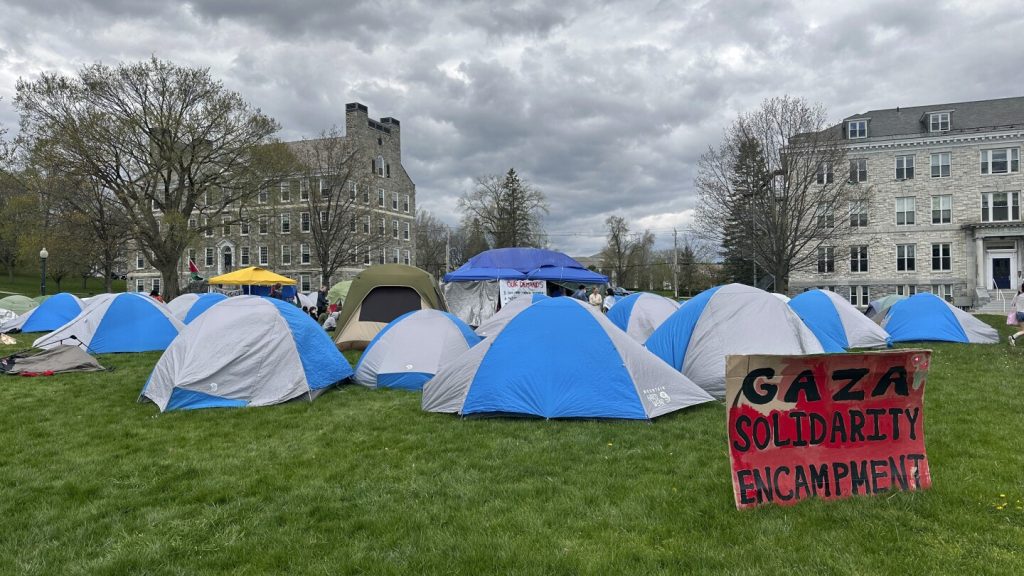A wave of protests has spread across U.S. campuses in the last two weeks, with students pitching tents or occupying buildings in protest of the Israel-Hamas war. It began on April 18 at Columbia University in New York City and has since spread to dozens of other campuses, including Harvard and UCLA. Students are calling on their colleges to stop doing business with Israel or companies supporting the war in Gaza. Some are also asking for amnesty for protesters who could face discipline. University officials have negotiated with protesters at some campuses, while others have called the police to clear camps.
City and campus leaders in some places have alleged that protests are being led by “outside agitators” with no connection to the universities. However, student protesters have rejected these claims. Arrested protesters have included a mix of students and non-students. New York City Mayor Eric Adams alleged that “outside agitators” had co-opted the Columbia University demonstration, referencing a woman who was not on campus and was not among those arrested. Similar claims have been made at other campuses, but students have denied them.
Pro-Palestinian activists are calling on universities to sever ties with companies that support Israel’s military efforts. Specific demands vary by campus, with some students demanding transparency around investments. At the University of Michigan, protesters cited investments in firms producing drones and surveillance technology used in Israel. Michigan officials stated they have no direct investments with Israeli businesses and that direct investments make up a small fraction of the endowment. Protesters at MIT are also demanding an end to research contracts from Israel.
While protests have spread to dozens of campuses across the country, violence has been relatively rare. More than 2,000 people have been arrested across more than 30 colleges, representing a small percentage of the total number of colleges and universities in the U.S. The protests have drawn comparisons to student demonstrations of the Vietnam War era, but have not reached the same level of violence. Historians note that this movement may be the largest on U.S. campuses in recent history, but so far, it has not been as widespread or violent as protests from previous eras.
The endgame for the protesters is visibility, with the aim of having their message heard around the world. While the movement has drawn significant news coverage, the overall impact on college campuses across America has been limited. Some protests have demanded an end to research contracts from Israel and transparency around university investments. The protests have highlighted the ongoing conflict in the Middle East and the role of universities in potentially supporting it. Activists continue to push for accountability and transparency from their institutions.
In conclusion, the recent wave of protests on U.S. campuses in response to the Israel-Hamas war has sparked discussions around the role of universities in supporting conflicts. While the protests have brought visibility to the issue, the overall impact has been limited. Students continue to push for transparency and accountability from their institutions, demanding an end to ties with companies supporting the war efforts. The protests have drawn historical comparisons to student demonstrations of past eras, but have not reached the same level of violence. The movement represents a significant moment in campus activism, highlighting the ongoing conflicts in the Middle East and the role of universities in addressing them.


